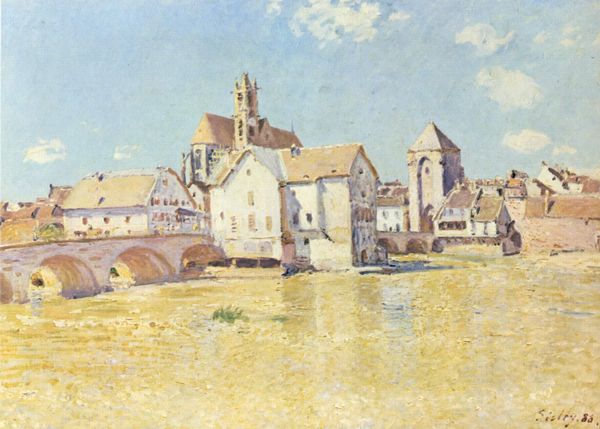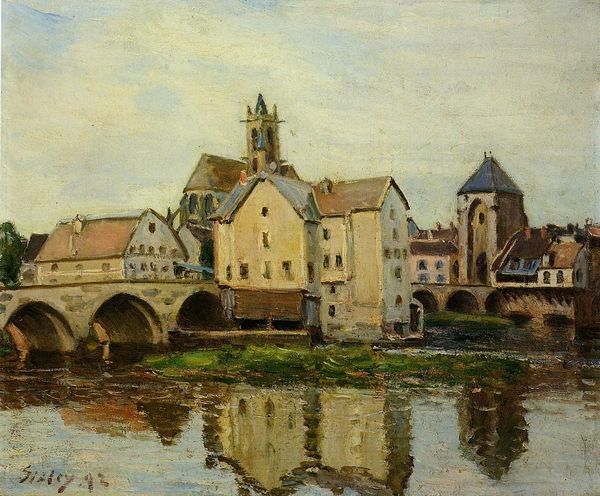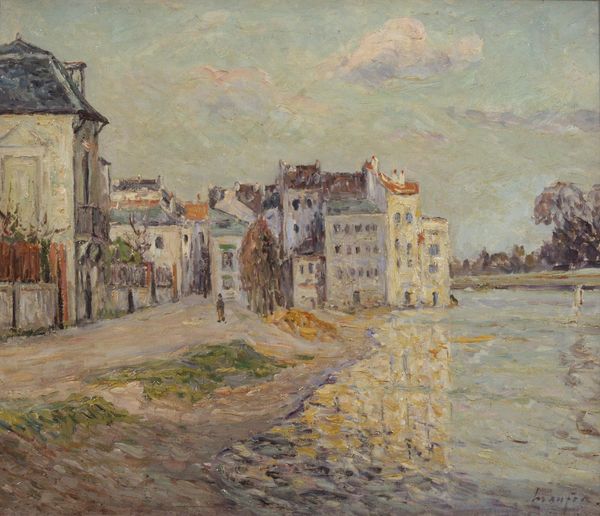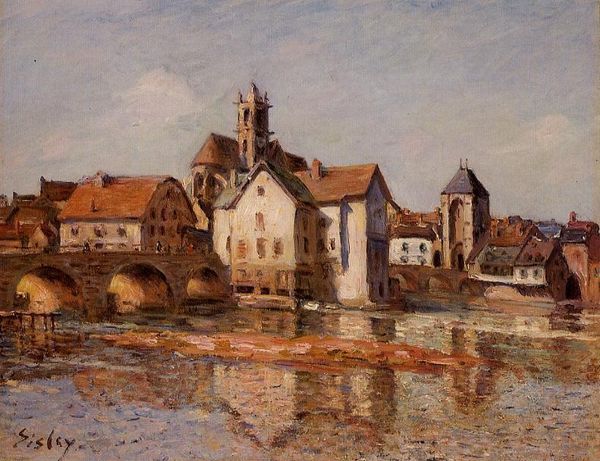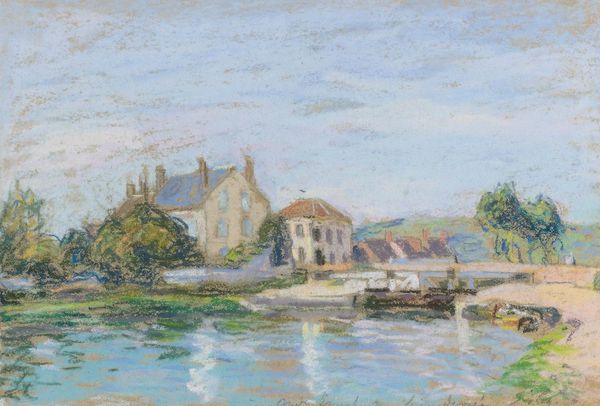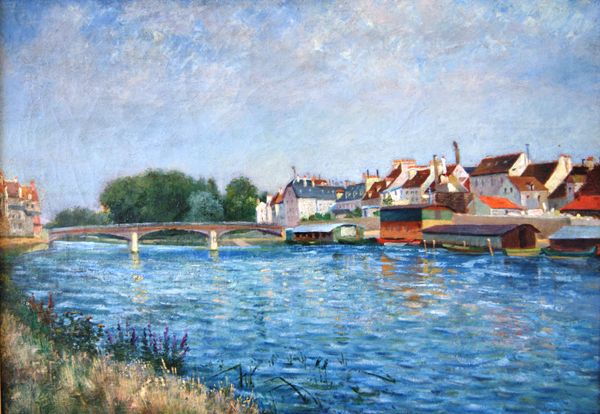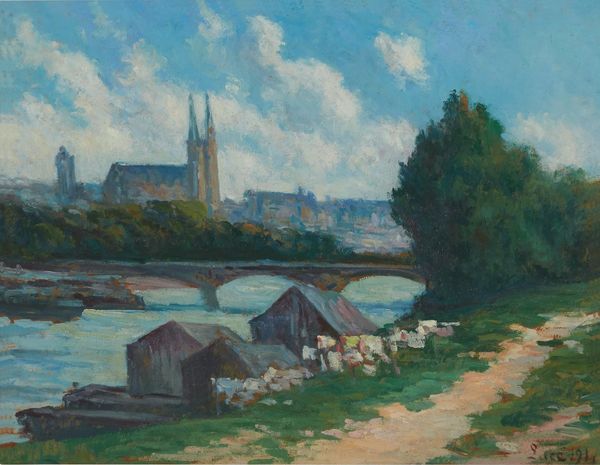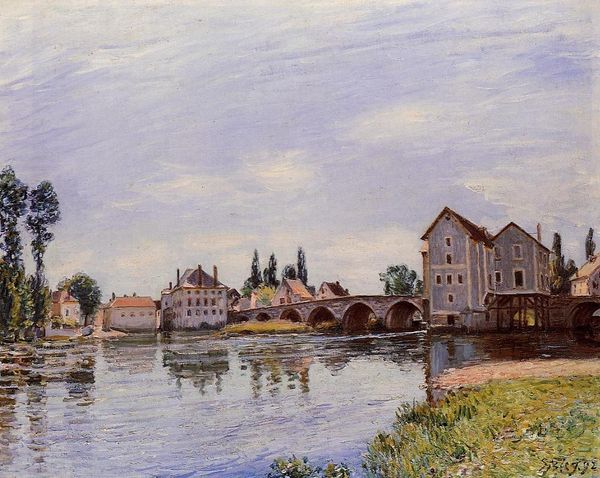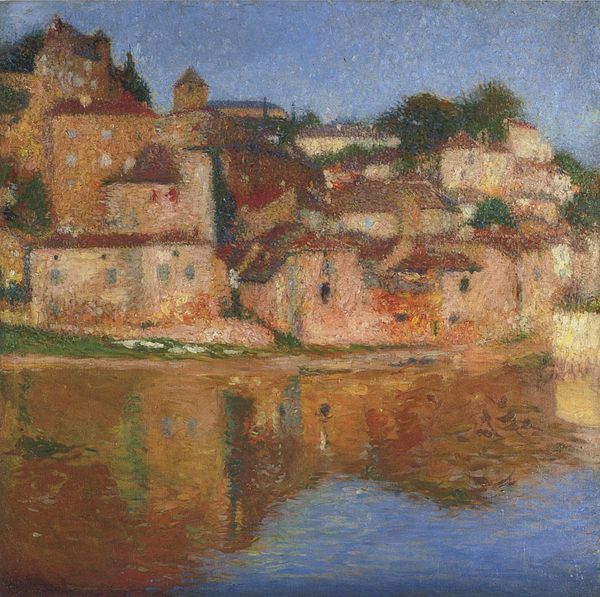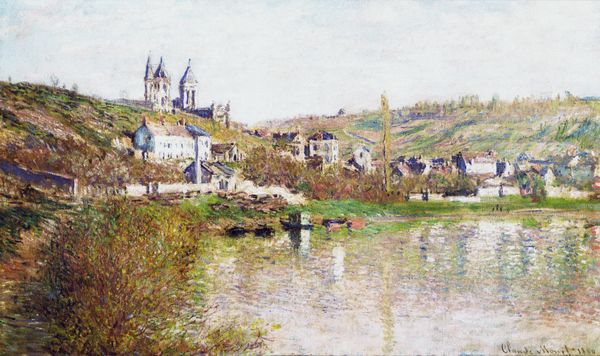
painting, plein-air, oil-paint, oil-on-canvas
#
painting
#
impressionism
#
impressionist painting style
#
plein-air
#
oil-paint
#
landscape
#
impressionist landscape
#
oil painting
#
cityscape
#
oil-on-canvas
Dimensions: 25 1/2 x 36 3/16 in. (64.77 x 91.92 cm) (sight)35 1/2 x 46 1/4 in. (90.17 x 117.48 cm) (outer frame)
Copyright: Public Domain
Curator: Here we have Alfred Sisley’s "Le Pont de Moret," painted in 1888, currently residing at the Minneapolis Institute of Art. Editor: The instant impression I get is of serenity—the soft light, the way the brushstrokes almost mimic the ripples on the water. There's a quiet charm here. Curator: Absolutely. Structurally, observe how Sisley employs horizontal and vertical elements to establish spatial relationships. The bridge and buildings create a strong horizontal line, counterpointed by the verticality of the church spire and tower. The planes created by the river add complexity. Editor: Beyond the structural components, the bridge itself is laden with meaning. As a passageway, the bridge connects two worlds – two parts of the town – but also serves as a metaphor for transitions, perhaps the flow of time or the connection between the mundane and the spiritual suggested by the towering church. Curator: Quite so. Notice the limited, yet harmonious color palette. Predominantly cool tones of blues, grays, and whites evoke a tranquil atmosphere. There’s an emphasis on capturing the subtle shifts of light and atmosphere. The paint is applied in short, broken strokes. Editor: And what an effective technique. The symbolism of water also speaks to me; its fluidity, its association with cleansing and reflection. Water is a universal symbol that recurs in many cultures. Even the subtle reflection of the buildings in the water lends depth to this theme. Curator: Precisely. I would only add that such reflections demonstrate an Impressionistic desire to represent ephemerality. Editor: It's striking how much emotion a landscape can convey through what initially appears to be a simple scene. The soft textures really draw me in. Curator: A successful synthesis of form and symbolic depth. Sisley offers us more than a scene. He presents us with the ephemeral quality of a place in time. Editor: Yes, seeing how both structural form and cultural memory converge deepens one’s appreciation for Sisley’s craft.
